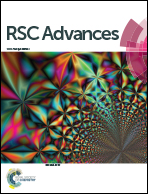The deviations of evaporation modes in two different morphologies of 2D WS2 film
Abstract
Exploring the inverse process of materials growth, evaporation of atoms from the material, is a crucial method to investigate the physical properties of two dimensional (2D) nanomaterials. Here, the evaporation modes of two different morphologies of 2D WS2 film, stacked film and normal film, were investigated by thermal annealing. It is found that the atomic evaporation rate increases and the crystallinity deteriorates when annealing temperature rises. During the evaporation process, atom evaporation firstly starts from the boundaries and defects. The evaporation rate is proportional to the free energy of S and W atoms, and inversely proportional to the local S–W atomic concentration. There is a striking difference in the evaporation modes between stacked film and normal film; layer-by-layer peeling off the surface only appears in normal film. These results imply that the interlayer coupling strength of stacked film is greater than that of the normal film with uniform thickness.



 Please wait while we load your content...
Please wait while we load your content...